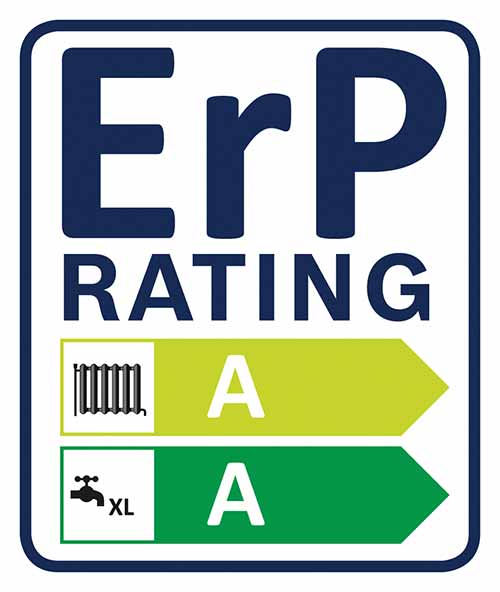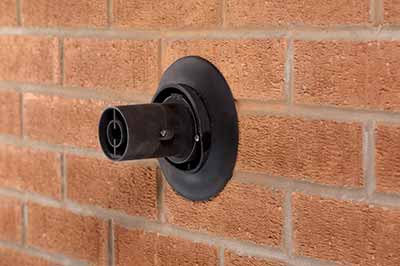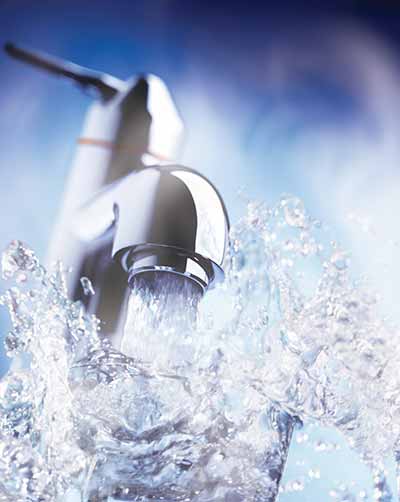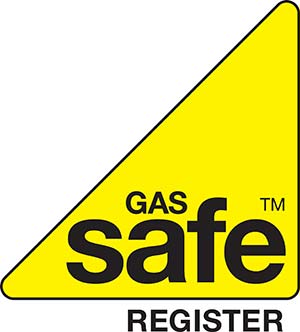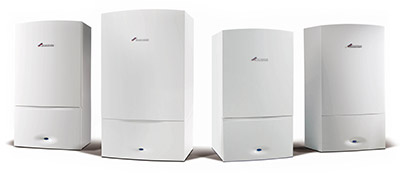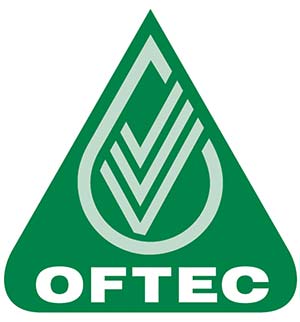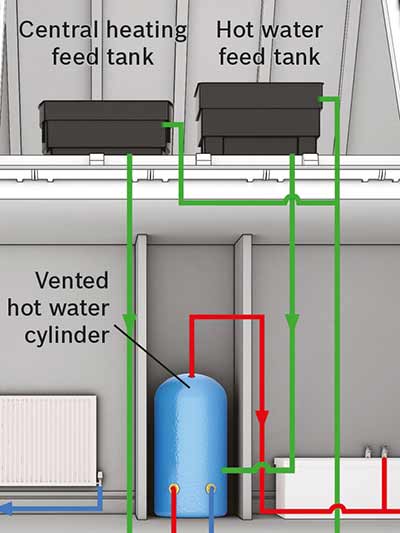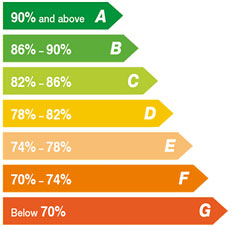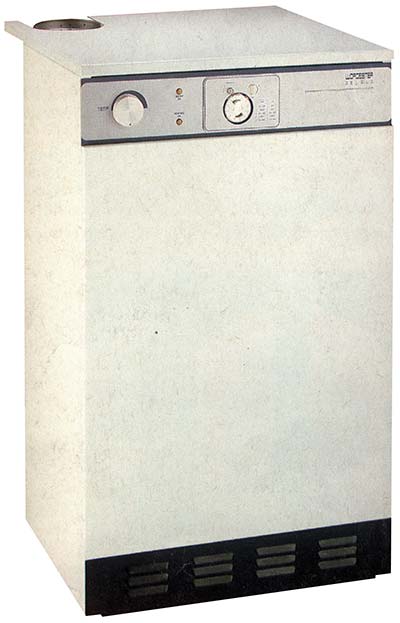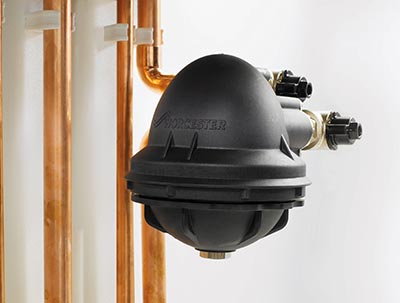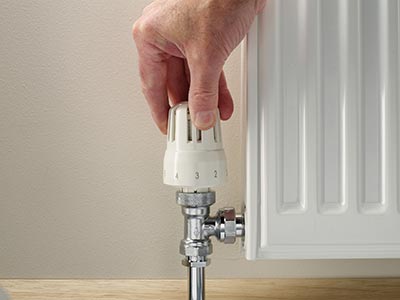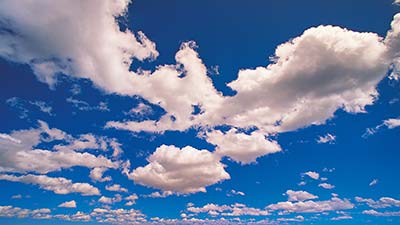What Comes Out of a Combi Boiler Flue
Learn about boilers
Deciding which boiler will make an efficient and practical fit with your home and lifestyle can be confusing. The images below show the main system types, how they work, their advantages and what kind of homes they work best in.
If your new boiler is going to be fitted onto your existing system, please consider the cleanliness of your existing pipework and radiators as this could cause damage to your new boiler. For more information about system cleanliness, view our helpful FAQ
Want to understand more about boiler quotes? Visit Our boiler quotes explained page
Types of boiler
Combi Boilers
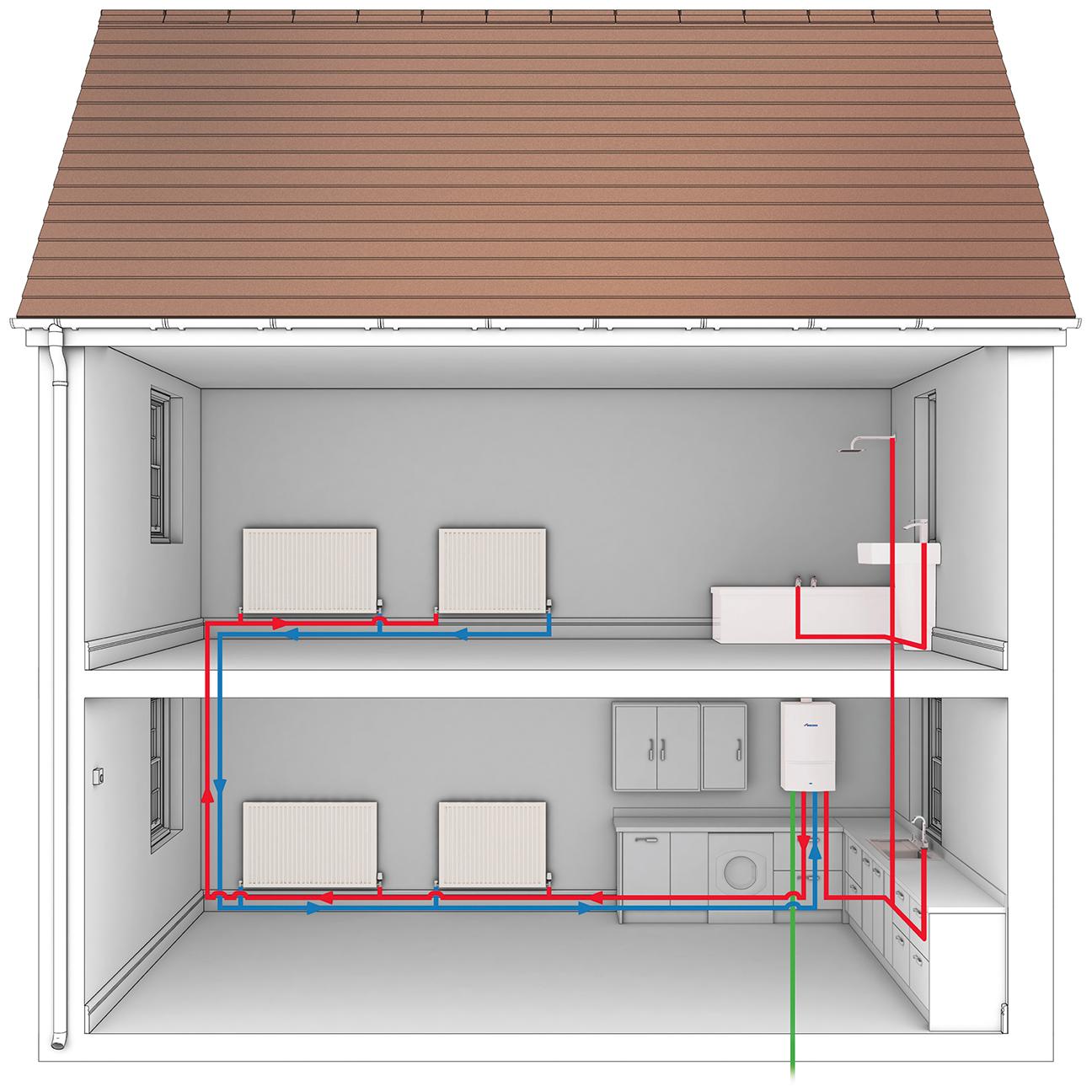
A combination or 'combi' boiler is both a high efficiency water heater and a central heating boiler in a single compact unit. Combi boilers heat water directly from the mains when you turn on a tap, so you won't need a hot water storage cylinder or a cold water storage tank in the roof space.
They are also very cost-effective and energy-efficient as water is heated instantly rather than being heated and then stored in a cylinder. An added benefit is that hot water is delivered at mains pressure, which means that you could get a powerful shower without the need for a separate pump.
- Compact sizes make combi boilers perfect for smaller properties
- Ideal where there is little or no loft space
- No need for a hot water cylinder allows increased living space
- No cold water storage tank frees up a loft for conversion
- No risk of loft pipework freezing
- Less pipework in the home makes installation typically cheaper
System Boilers
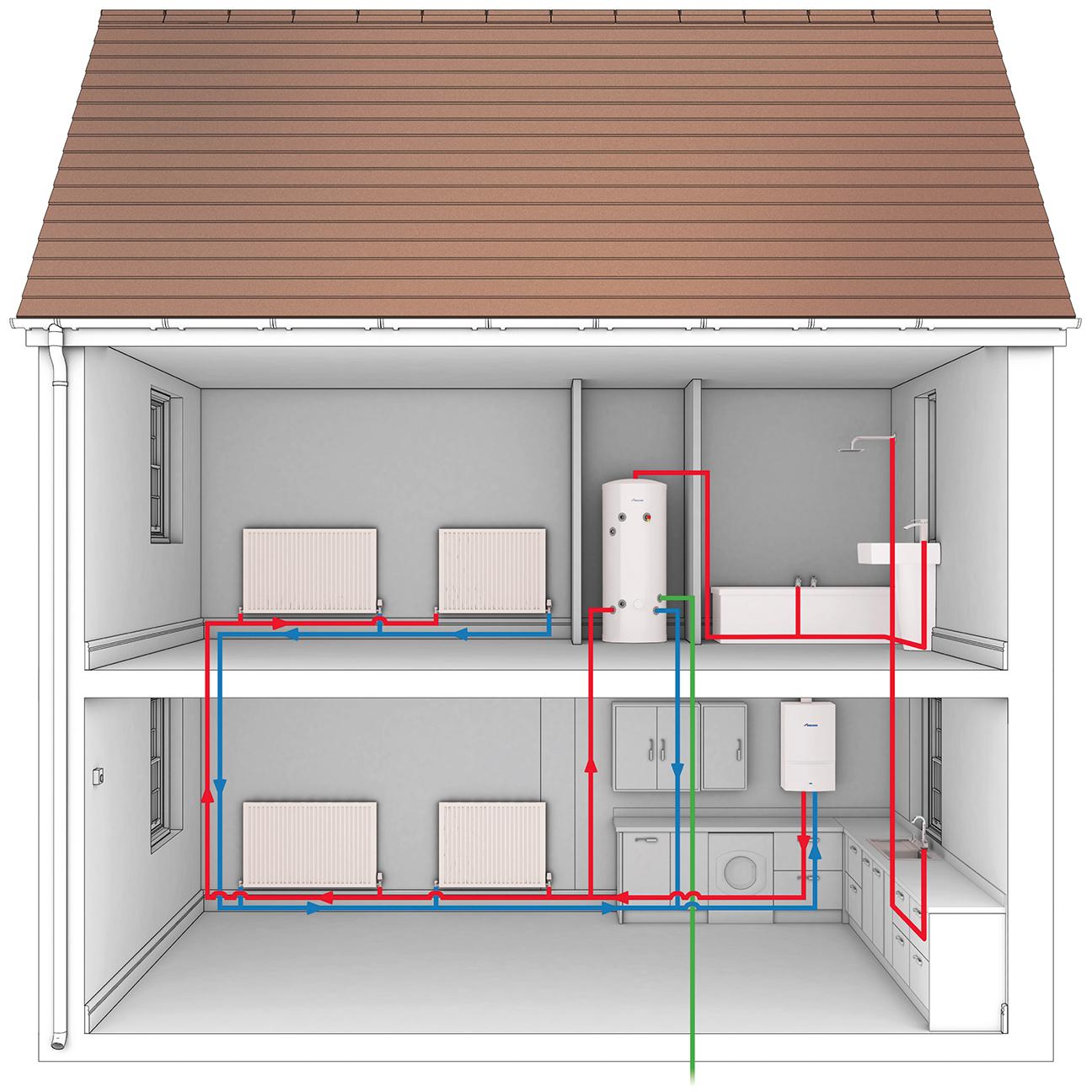
System boilers require a cylinder for storing hot water, however the major heating and hot water system components are built into the boiler itself, making it quicker and easier to install. In addition, there is no need for a tank in the loft, so it can be an option in a home with little or no loft space or where the space is earmarked for a conversion.
These boilers are also compatible with solar water heating systems, which deliver environmental benefits as well as lower energy bills.
- Ideal for homes with more than one bathroom
- Constant supply of hot water to any number of taps at the same time
- No need for a loft tank, freeing up space and eliminating worries about leaks or frost damage
- Economical to run
- Built-in components makes installation quicker and neater
Regular Boilers
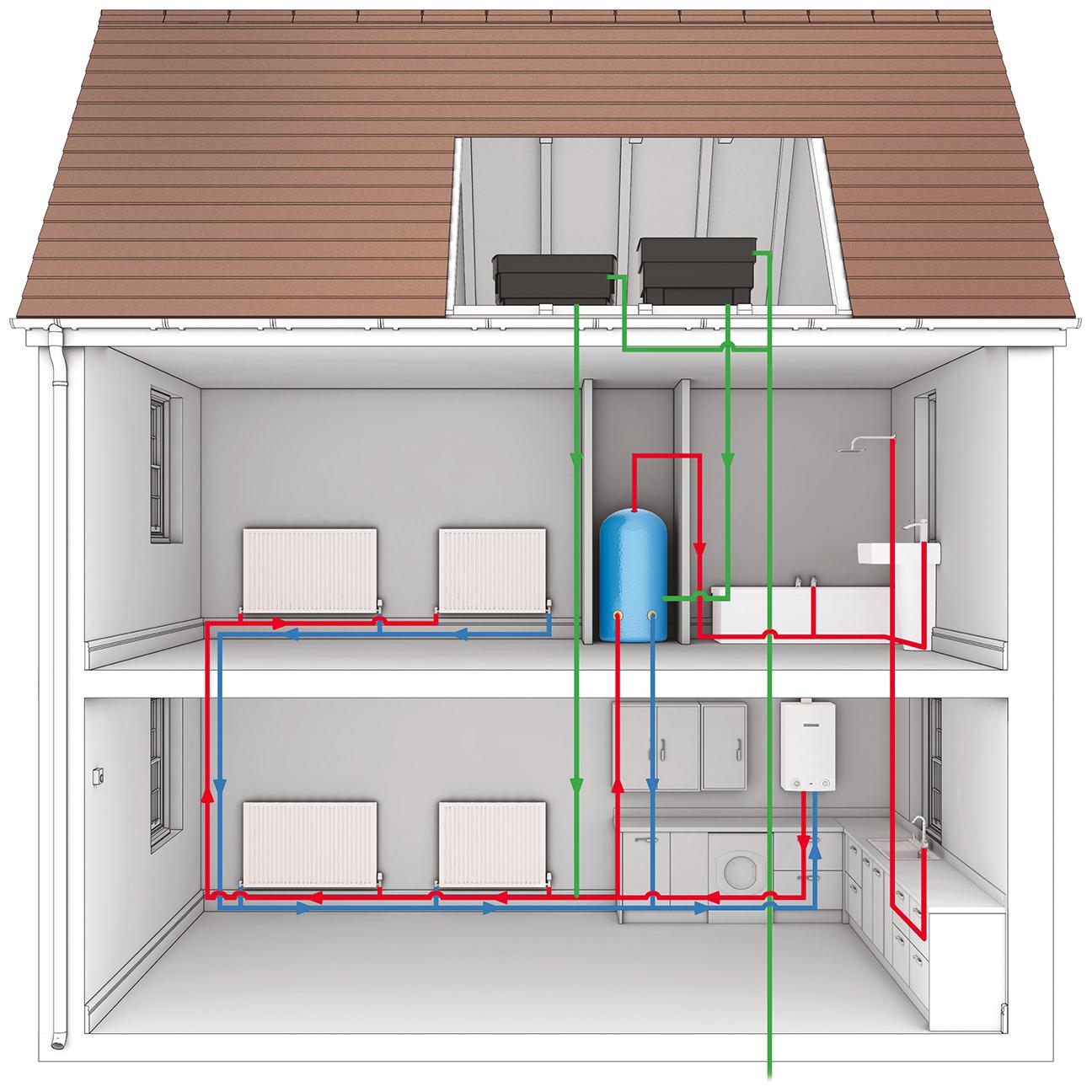
Regular boilers (sometimes known as traditional, conventional or heat only boilers) are ideally suited to homes that already have a traditional heating and hot water system which is linked to a separate hot water cylinder. These boilers also need a cold water storage tank in the loft to feed the hot water cylinder as well as a tank that maintains the water level of the central heating system.
A regular boiler may be the best option for replacing an existing boiler if the property has an older radiator system, as it might not be able to cope with the higher water pressure that is delivered by system or combi boilers.
- Perfect for homes where a lot of hot water is used at the same time
- Ideal where there are two or more bathrooms
- A good option in areas where water pressure is low
- Compatible with solar water heating systems for a lower carbon footprint and lower energy costs
Important terms and definitions
| Term | Definition |
|---|---|
| Condensing Technology | Changes to government legislation and technology advances in boiler design has driven boiler designs to condense to ensure as much heat as possible is converted into useful heat for your home. By condensing, your boiler will ensure at least 90p in every £1 you spend on gas or oil will be converted into heat for your home comfort. |
| Condensate | Along with heat, when gas or oil is burned within your boiler condensation is also created. This can be seen in the gases which plume out from the boiler, something that is especially noticeable in cold weather. However in addition to this condensate being discharged in the air, condensate also collects inside the boiler and is drained away either inside or outside your home. This is safe and nothing to worry about. However if your condensate pipe has not been terminated according to our installation guidelines, there is a chance it could freeze in severe weather conditions. Please contact your installer in this instance or see here for advice on how to rectify this yourself |
| ErP Rating | The ErP Rating is a new requirement set by the European Union which is designed to drive improvements in the efficiency and performance of heating and hot water products. The ErP rating introduces new efficiency classes from A++ to G which are displayed on a labels which come with the boiler. ErP labels are already a common sight on washing machines, televisions and other appliances within electrical retailers. |
| Flue | The flue is the part of the boiler which allows exhaust gases to exit the boiler. The flue is typically situated directly behind the boiler enabling waste gases to exit safely straight out of the external wall of your home. |
| Flow Rate | Quoted for Combi boilers, a flow rate represents how many litres of hot water comes out of the tap in a minute. Your flow rate is determined by the amount (and pressure) of water that is entering your property from the water main and the ability of the boiler to heat that water to the temperature you have set. The more powerful a boiler is (represented in kW), the faster the boiler will be able to heat the water coming into your home. However it is important to recognise a high kW output will not always increase your flow rate. If you have 10 litres per minute coming into your property, you will only be able to receive 10 litres per min of hot water. For example having a boiler that has a maximum flow rate of 14 litres per min will not increase the amount of hot water you receive, if you only have 10 litres per min coming into your boiler. |
| Gas Safe Accreditation | Gas Safe Accreditation is the hallmark for gas safety in the UK. An installer must be on the Gas Safe Register to be legally allowed to work on your boiler or any other gas appliances in your home. www.gassaferegister.co.uk |
| Greenstar | Greenstar is the name given to all of the Worcester Gas fired boiler range, and signifies high energy efficiency, reliability and comfort. There are more than 2 million Greenstar Combi boilers fitted in UK homes. |
| OFTEC Accreditation | OFTEC is a trade association that takes a lead role in setting industry standards of oil-fired boilers. OFTEC manages a competent person registration scheme, enabling you to find installers who install, commission and service oil-fired products. We always recommend that you choose a qualified OFTEC installer for your installation. www.oftec.org |
| Open Vent | This is a term which is also used to describe a Regular boiler type. A Open vent system will have a "Open Vent" and tanks within the loft space. This type of heating system is typically common in older properties. |
| SEDBUK Rating | SEDBUK stands for Seasonal Efficiency of Domestic Boilers UK. It provides a rating structure which provides both a percentage efficiency score as well as A to G rating enabling an easy comparison of boilers. SEDBUK has been integrated to the recent ErP labelling directive. |
| Standard Efficiency (G Rated) | Old "Standard Efficiency" boilers waste large amounts of heat as they don't Condense and recycle the heat before it leaves your boiler via the flue. In the current SEDBUK rating structure a Standard Efficiency boiler would be deemed G-rated and is likely to be 30% less efficient* than a new Worcester A-rated boiler. |
| System Filter | A system filter is a specifically designed unit which aims to remove and filter magnetic and non-magnetic contaminants from your central heating system before they reach your boiler. Building Regulations always recommends a system filter be fitted to your heating system pipes prior your boiler to prevent any damage to key components. |
| System Flushing | Over time oxygen in the heating system can react with the metals and components of a heating system such as radiators to produce magnetite (rust) particles, which becomes suspended in your system water. This process and the build-up of other chemicals (such as lime scale) can quickly cause blockages and damage key components within the boiler and system. To prevent this a process of thorough system flushing should take place when fitting a new boiler onto an old heating system. This process involves forcing old system water out of the heating system, whilst simultaneously filtering the system until all of the old water and contaminants are removed. Finally inhibitor and a system filter is added to prevent any future sludge and contaminants from building up. |
| TRV | Thermostatic Radiator Valves (TRV's) enable you to control the individual temperature of each room in your home, and can be adjusted to the comfort levels you want. The higher the number selected on the TRV, the hotter the radiator and warmer the room. Please note a TRV should not be fitted on a radiator in the same room as a room thermostat. |
| Weather Compensation | Weather Compensation is a feature which is programmed into selected boiler controls and Greenstar I Combi boilers. Designed to improve comfort, the feature automatically adjusts the temperature of your system to compensate for the weather outside. E.g. if the temperature outside drops, your radiators will run hotter, whilst if the temperature increases the boiler produce less heat, reducing your running costs. |
Find a local installer
Each heating system needs custom designing. Find and contact a Worcester Accredited Installer in your area to book a home visit.
After calculating the best system for your home and hot water requirements, your installer will then provide you with a free quote.
What Comes Out of a Combi Boiler Flue
Source: https://www.worcester-bosch.co.uk/products/boilers/explained
